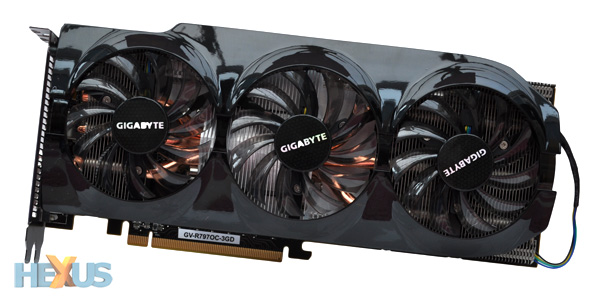Final thoughts and rating
If you're a die-hard PC gamer, start saving as the Gigabyte HD 7970 OC is a top-end card that ought to be on every enthusiast's radar.
Gigabyte clearly knows how to make a finely-tuned graphics card, and by applying a custom-designed WindForce cooler to AMD's finest 28nm GPU, it has created a solution that's better than reference in just about every regard.
The card's shorter and lighter than AMD's standard design, it runs comfortably cooler - to the tune of around 15 per cent - it's quieter in use, and to top it all off, it's factory overclocked to give that extra ounce of performance.
It is the best HD 7970 we've seen thus far, but despite our high praise, it's worth echoing an earlier proviso; this is a card that's only really suited to die-hard PC gamers. When it arrives at retail, Gigabyte's range-topping powerhouse will likely cost more than an Xbox 360, a PlayStation 3 and a Nintendo Wii combined, and unless you're gaming at mega-high resolutions, the HD 7970 OC clearly won't represent the best value for money.
Furthermore, if you are a PC gamer at heart, it won't have escaped your notice that a pair of lesser graphics cards can be teamed up in SLI or CrossFire for what's likely to be superior performance at a lower price point.
Though, this one isn't really about delivering value, is it? It's about living on the bleeding edge of graphics technology, and to that end, we've seen no single-GPU solution as potent as Gigabyte's HD 7970 OC.
Bottom line: cooler, quieter and faster than reference? There will no doubt be others, but right now, this is probably the best Radeon HD 7970 money can buy.

The Good
Fastest single-GPU card we've tested
Lots of overclocking headroom
Quieter than reference
Cooler than reference
The Bad
It's a hugely-expensive proposition
HEXUS Rating

Gigabyte Radeon HD 7970 OC
(GV-R797OC-3GD)
HEXUS Awards

Gigabyte Radeon HD 7970 OC
(GV-R797OC-3GD)
HEXUS Where2Buy
TBC.
HEXUS Right2Reply
At HEXUS, we invite the companies whose products we test to comment on our articles. If any company representatives for the products reviewed choose to respond, we'll publish their commentary here verbatim.













